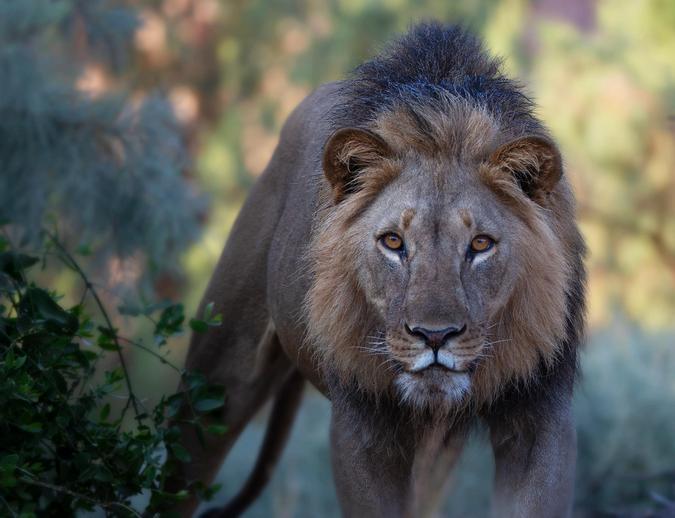
The attempted relocation of six Namibian desert-adapted lions (3 adults and 3 cubs) from the Daures area (Erongo region) to Skeleton Coast Nation has failed, and the subsequent relocation of the same lions to a private game reserve in the Khomas Region was dogged in controversy as one lion died in the process.
According to Namibia’s Ministry of the Environment & Tourism (MET), the six lions were twice relocated to Skeleton Coast after they caused “problems” (communities were reporting ongoing livestock losses) in their home range in the Erongo region, and on both occasions, the lions returned to their home ranges. MET subsequently decided to relocate the lions to the 9,500 hectare N/a’an ku sê wildlife sanctuary where they “will not cause any problems”.
The male lion, Nkosi – XPL 110, died during this relocation, reportedly of “capture stress”. The adult lions had previously been collared for a monitoring and early warning system, as part of MET’s attempts to deal with ongoing human-lion conflict in the area.
MET advised that the relocated lions would remain the property of MET, and will be relocated to a national park once MET is “satisfied with their behaviour”.
In a Facebook discussion, Izak Smit of Desert Lions Human Relations Aid (DeLRHA) questioned the death of a male lion in the prime of his life. He also questioned why MET would tranquillise and move a lactating female with three cubs and a heavily pregnant female lion.
Smit also commented that “The male and females are of outstanding genetic material and their absence will leave the pride with 5 sub-adults of about 2.7 and 3 years old, two females and three males whom are all closely related (siblings or cousins). This could mean third generation in-breeding as there is no known record of “outside” males, i.e. new blood.”
In their statement, MET suggested that the lions were being fed by people in the vicinity of White Lady Lodge in the Daures area of Erongo, hence their returning to the area after two unsuccessful relocations. This claim was rejected by Smit, who countered that, to the best of his knowledge, the lions were targeting hobbled donkeys and sheep kept in a flimsy kraal near the lodge. In reply to questions on Facebook, he suggested that there is no evidence of “blatant feeding” of lions in order to lure them for viewing by tourists, and asked why no charges had been filed if this was the case.
Smit did concede that White Lady Lodge does have a history of keeping livestock in poorly constructed kraals, and of losing a large number of livestock to lions.
To comment on this story: Login (or sign up) to our app here - it's a troll-free safe place 🙂.![]()
HOW TO GET THE MOST OUT OF AFRICA GEOGRAPHIC:
- Travel with us. Travel in Africa is about knowing when and where to go, and with whom. A few weeks too early / late and a few kilometres off course and you could miss the greatest show on Earth. And wouldn’t that be a pity? Browse our ready-made packages or answer a few questions to start planning your dream safari.
- Subscribe to our FREE newsletter / download our FREE app to enjoy the following benefits.
- Plan your safaris in remote parks protected by African Parks via our sister company https://ukuri.travel/ - safari camps for responsible travellers






